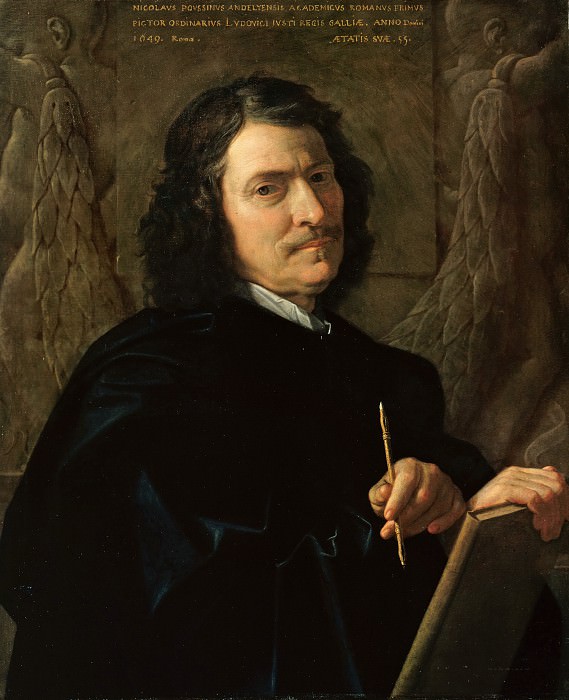Self-portrait Nicolas Poussin (1594-1665)
Nicolas Poussin – Self-portrait
Edit attribution
Image taken from other album: gallerix.org/s/1071681317/N/7297/
Download full size: 2953×3639 px (3,4 Mb)
Painter: Nicolas Poussin
Location: Gemäldegalerie, Berlin.
The painting was painted by the founder of such a trend in painting as classicism, in 1649. Nicolas Poussin was famous for his ability to reveal the themes of his contemporary era, often turning to themes of ancient mythology. He tried to show examples of high morality and valor, as well as trying to educate his contemporaries in the understanding of the perfect person. In his work throughout his life one can trace a consistency as well as a moral and ideological orientation.
Description of the painting "Self-Portrait" by Nicola Poussin
The painting was painted by the founder of such a trend in painting as classicism, in 1649. Nicolas Poussin was famous for his ability to reveal the themes of his contemporary era, often turning to themes of ancient mythology. He tried to show examples of high morality and valor, as well as trying to educate his contemporaries in the understanding of the perfect person. In his work throughout his life one can trace a consistency as well as a moral and ideological orientation. This was one of the reasons why his work has been recognized as a benchmark for art institutions in France. He painted his self-portrait in 1649, depicting himself at the age of 53.
In the center of the canvas is Poussin himself, dressed in a black robe that covers him tightly. Below his throat, a small white collar separates the black fabric from the skin on his neck. The long tight sleeves of the robe reach to his wrists, clinging tightly to his skin. He holds a book in his right hand and a pencil in his left. It looks as if he is about to sketch something he is looking at. And the look in his dark eyes is precisely on the viewer.
His dark, almost black hair is slicked back over his shoulders, not yet gray. A neat mustache in a thin line above his upper lip, no beard or stubble on the rest of his chin. His eyes, which are fixed upon the other side of the painting, are serene and seem to study the person on the other side. His black eyebrows and the slight wrinkles that have already appeared on his face do not spoil him in the slightest. Behind him is a brown wall with nothing but a relief carved into it.
Кому понравилось
Пожалуйста, подождите
На эту операцию может потребоваться несколько секунд.
Информация появится в новом окне,
если открытие новых окон не запрещено в настройках вашего браузера.
You need to login
Для работы с коллекциями – пожалуйста, войдите в аккаунт (open in new window).




















You cannot comment Why?
The artist has rendered the man’s features with meticulous detail, emphasizing the lines etched by age around his eyes and mouth. His hair, dark and long, cascades down his shoulders, contributing to an overall impression of scholarly seriousness. He is clad in a somber black garment that further reinforces this sense of solemnity and perhaps hints at a life dedicated to intellectual pursuits or artistic creation.
In his right hand, he holds a stylus, while the left rests upon what appears to be a drawing tool – a deliberate inclusion suggesting his profession as an artist or draftsman. The background is dominated by two sculpted figures flanking the subject, partially obscured by shadow and contributing to a sense of depth and monumentality. Above them, an inscription is visible, though its content remains illegible in this view.
The subdued color palette, primarily consisting of dark tones punctuated by subtle highlights on the face and hands, creates a mood of quiet contemplation. The lighting appears to originate from a single source, illuminating the subject’s face and drawing attention to his expression. This focused illumination also accentuates the texture of his clothing and the background elements.
Subtly, the portrait conveys themes of self-awareness, intellectual labor, and perhaps even a degree of melancholy or resignation. The direct gaze suggests an invitation for scrutiny, while the stylus and drawing tool symbolize creative endeavor and skill. The sculpted figures in the background might represent allegorical representations of artistic inspiration or historical significance, elevating the subject’s status within his field. Overall, the painting is a carefully constructed representation intended to convey not only physical likeness but also a sense of character and intellectual depth.